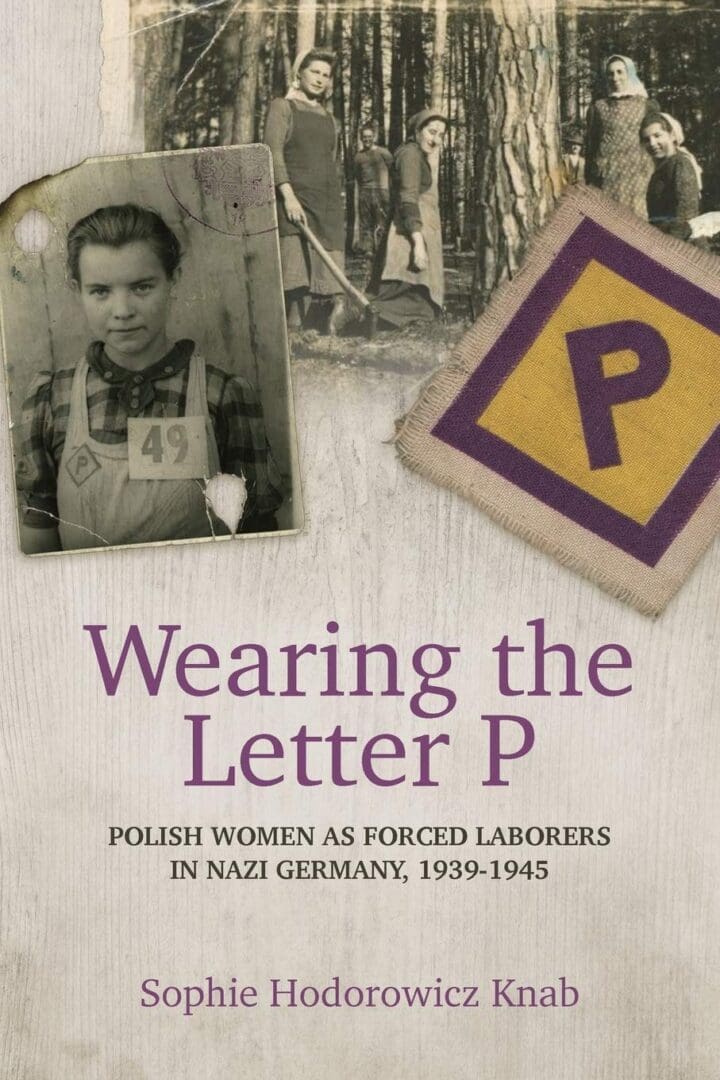
Wearing the Letter P by Sophie Hodorowicz-Knab
Young Polish Women Deported to Germany as Forced Laborers to Support Hitler’s War Effort
Among the little-known tragedies of World War II was Hitler’s abduction of Poles and ordering them to work as civilian forced laborers to support Germany’s war effort.
According to the Polish government’s recently-published, three-volume report on Poland’s losses under German occupation, up to two million Poles were impressed into forced labor in Germany during the war. One of the first actions of the Germans was to issue a decree that all individuals aged sixteen and above must register for work. In some areas, this requirement was lowered to fourteen, and by 1943, every Polish child, upon reaching their twelfth birthday, had to be registered with the labor office and receive work papers, the same as an adult.
In her meticulously-researched work Wearing the Letter P: Polish Women as Forced Laborers in Nazi Germany, 1939-1945, Sophie Hodorowicz Knab points out that over half of the Polish civilian laborers in Germany were girls and their average age was around twenty. Hermann Göring, one of the most powerful figures in the Nazi Party, directed that “Polish workers, especially girls, are to be imported on the largest possible scale.”
As civilian forced laborers, Polish girls and women were torn from home and very often at a very young age. They were isolated, insulted, neglected when sick, and suffered extreme hardships. From their forced labor, some were sent to concentration camps while others were euthanized in German-run hospitals.
They were physically abused and sexually exploited with no rights or recourse to the law. They were forced to have abortions to keep working for the Reich. If they gave birth to a healthy child, they were forced to leave their newborn infants at one of the German-run “children’s homes”, where the child soon died from planned neglect and starvation.
Ms. Knab provides compelling details of the Germans’ roundups of civilians, the horrors of transit camps while awaiting deportation, the living and working conditions of Polish women in industry and agriculture, what it meant to wear the letter “P” that marked them as a Pole, and all the discriminatory practices that were brutally inflicted on them. These Polish women also faced the horrors of sexual exploitation, suppressed pregnancies, forced abortions, dismissive child care under the Germans, and the constant threat of being sent to concentration camps.
Ms. Knab’s mother was a Polish forced laborer from 1942 to 1945 but never talked about her life during the war. Having conducted extensive research and compiled her findings over 14 years, Ms. Knab gives a much-needed voice to her mother and the many thousands of Polish women whose sufferings and deaths as civilian forced laborers during the war had not been recognized during their lifetimes. By providing many first-person accounts, she expertly sheds light on a part of World War II that has been largely ignored.
Date of Article: July 2023
Author: Gene Sokolowski
Source: Wearing the Letter P: Polish Women as Forced Laborers in Nazi Germany, 1939-1945, by Sophie Hodorowicz Knab
